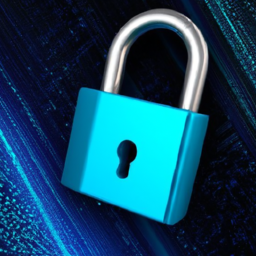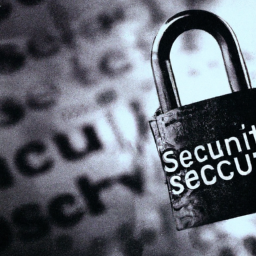What Is The Future Of Cybersecurity?
In this ever-evolving digital landscape, the future of cybersecurity looms with both excitement and concern. As we embrace the rapid advancements in technology, the potential threats and vulnerabilities also multiply. But fear not, for there is hope in the face of this relentless battle against cyber threats. From artificial intelligence to blockchain, innovative solutions are emerging that promise to revolutionize the way we protect our digital lives. In this article, we will explore the emerging trends and breakthroughs that are shaping the future of cybersecurity, empowering individuals and organizations to navigate this treacherous digital world with confidence.
Artificial Intelligence in Cybersecurity
Artificial Intelligence (AI) has become a game-changer in the field of cybersecurity. With its ability to analyze vast amounts of data and make intelligent decisions, AI is transforming the way organizations detect and respond to cyber threats.
Machine Learning in Cybersecurity
Machine learning, a subset of AI, has proven to be highly effective in identifying patterns and anomalies in large datasets. By analyzing historical data, machine learning algorithms can learn to recognize known cyber threats and quickly identify new and emerging ones. This proactive approach allows organizations to stay one step ahead of cybercriminals.
Automated Threat Detection
One of the key applications of AI in cybersecurity is automated threat detection. Traditional security systems often struggle to keep up with the ever-evolving nature of cyber threats. AI-powered systems, on the other hand, can continuously monitor network traffic, detect suspicious activities, and alert security teams in real-time. This not only improves response times but also reduces the risk of human error.
Intelligent Security Analysis
AI is also being used for intelligent security analysis. By aggregating and analyzing vast amounts of security data, AI algorithms can identify patterns and trends that humans might miss. This allows security analysts to prioritize their efforts and focus on the areas that pose the highest risk. Additionally, AI can help in the automation of routine security tasks, freeing up human resources for more critical tasks.
Internet of Things and Cybersecurity
The proliferation of Internet of Things (IoT) devices has brought numerous conveniences to our lives. However, it has also introduced new cybersecurity risks and vulnerabilities that need to be addressed.
Risks and Vulnerabilities of IoT
Connected devices, such as smart home appliances, wearables, and industrial control systems, are vulnerable to cyber attacks. Weak encryption, unpatched software, and insecure configurations can leave IoT devices susceptible to hacking. Cybercriminals can exploit these vulnerabilities to gain unauthorized access to personal information or even take control of critical infrastructure.
Securing IoT Devices
To secure IoT devices, manufacturers must prioritize security throughout the development lifecycle. This includes implementing strong authentication mechanisms, ensuring timely firmware updates, and encrypting transmission channels. Additionally, users must follow best practices, such as changing default passwords, keeping software up to date, and disabling unnecessary features.
IoT Security Standards
The development of common security standards is crucial to ensuring the security of IoT devices. Industry collaboration and government regulations can help establish minimum security requirements for IoT manufacturers. By adhering to these standards, manufacturers can build more secure devices, and consumers can make informed choices about the products they purchase.
Quantum Computing and Cybersecurity
Quantum computing is an emerging technology with the potential to revolutionize various fields, including cybersecurity. However, it also poses significant challenges to the current cryptographic algorithms that protect our sensitive information.
Impacts of Quantum Computing on Cybersecurity
Traditional cryptographic algorithms, such as RSA and ECC, rely on the difficulty of solving complex mathematical problems. Quantum computers have the potential to solve these problems much faster, rendering these algorithms obsolete. This presents a significant threat to the security of encrypted data, such as financial transactions and personal information.
Quantum-Resistant Encryption
To mitigate the risks posed by quantum computing, researchers are actively working on developing quantum-resistant encryption algorithms. These algorithms use mathematical problems that are believed to be resistant to quantum attacks. By transitioning to quantum-resistant encryption, organizations can ensure that their data remains secure even in the face of powerful quantum computers.
Post-Quantum Cryptography
Post-quantum cryptography aims to develop cryptographic algorithms that are secure against both classical and quantum attacks. Researchers are exploring various encryption techniques, such as lattice-based cryptography, code-based cryptography, and multivariate cryptography. While these algorithms are still in the research phase, they hold the potential to provide long-term security in the age of quantum computing.
Biometrics in Cybersecurity
Biometric authentication is gaining popularity as a secure and convenient alternative to traditional passwords. Advancements in biometric technology are making it easier to verify an individual’s identity based on unique physiological or behavioral characteristics.
Advancements in Biometric Authentication
Biometric authentication methods, such as fingerprint recognition, iris scanning, and facial recognition, are becoming mainstream. These methods offer more robust security than traditional passwords since they are based on unique physical attributes that are difficult to replicate. Furthermore, biometric authentication provides a more convenient user experience as it eliminates the need to remember complex passwords.
Biometric Data Privacy
While the use of biometric data enhances security, it also raises concerns about privacy. Biometric information is highly personal and can be misused if it falls into the wrong hands. To address these concerns, strict regulations and industry standards are in place to ensure that biometric data is collected, stored, and transmitted securely. Organizations must also implement proper measures to protect biometric data against unauthorized access.
Multimodal Biometrics
Multimodal biometrics combines multiple biometric factors to achieve a higher level of security and accuracy. By using a combination of fingerprints, facial recognition, voice authentication, and behavioral characteristics, multimodal biometric systems can provide a more robust and reliable means of verifying an individual’s identity. This reduces the risk of false positives and ensures a higher level of security.
Cloud Security
Cloud computing has transformed the way organizations store and process data. However, this shift to the cloud also requires robust security measures to protect sensitive information from unauthorized access.
Securing Cloud Infrastructure
Securing the cloud infrastructure requires a multi-layered approach. This includes implementing strong access controls, regularly patching and updating software, and monitoring for suspicious activities. Additionally, organizations should implement encryption for data at rest and in transit to ensure its confidentiality and integrity.
Shared Responsibility Model
In a cloud computing environment, security responsibilities are shared between the cloud service provider and the customer. While the provider is responsible for securing the underlying infrastructure, customers are responsible for securing their applications, data, and user access. Understanding this shared responsibility model is crucial for organizations to effectively protect their assets in the cloud.
Encryption and Access Control in the Cloud
Encryption is a critical component of cloud security. By encrypting data before storing it in the cloud, organizations can ensure that even if a breach occurs, the data remains unreadable without the encryption keys. Additionally, robust access controls should be implemented to limit user permissions and prevent unauthorized access to sensitive data.
Blockchain and Cybersecurity
Blockchain technology, known for its use in cryptocurrencies like Bitcoin, has the potential to revolutionize cybersecurity by providing a decentralized and tamper-resistant platform for secure transactions and identity management.
Decentralized Security Architecture
Traditional centralized systems are vulnerable to single points of failure and hacking. Blockchain, on the other hand, uses a decentralized architecture in which transactions are verified by a network of computers, called nodes. This makes it extremely difficult for malicious actors to manipulate or tamper with the data, enhancing the overall security of the system.
Secure Transactions and Smart Contracts
Blockchain technology enables secure transactions by using cryptographic techniques to validate and record each transaction on a distributed ledger. This eliminates the need for intermediaries and reduces the risk of fraud. Smart contracts, which are self-executing contracts with the terms of the agreement directly written into code, further enhance security by automating the execution of transactions and reducing the potential for human error or manipulation.
Identity Management on the Blockchain
Identity management is a critical aspect of cybersecurity. Blockchain offers a secure and decentralized solution for identity verification and management. By storing identity information on the blockchain, individuals have control over their personal data and can grant or revoke access as needed. This reduces the risk of identity theft and provides a more secure and efficient means of identity verification.
Automation and Orchestration in Cybersecurity
Automation and orchestration technologies are becoming essential tools in cybersecurity operations, allowing organizations to streamline their incident response processes and reduce the risk of human error.
Automated Incident Response
Manual incident response processes can be time-consuming and error-prone, especially in the face of large-scale cyber attacks. Automated incident response tools can help organizations detect, analyze, and respond to threats in real-time. These tools can automatically block malicious traffic, isolate infected systems, and generate reports for further investigation.
Security Orchestration, Automation, and Response (SOAR)
Security Orchestration, Automation, and Response (SOAR) platforms combine automated incident response with intelligent workflow management capabilities. These platforms can integrate with various security tools to automate the collection and analysis of security data, enabling faster and more efficient incident response. SOAR platforms also provide centralized visibility and reporting, allowing security teams to identify trends and make informed decisions.
Reducing Human Error
Human error remains one of the leading causes of cybersecurity incidents. Automation and orchestration technologies help reduce the reliance on manual processes, minimizing the potential for human error. By automating routine tasks and providing guided workflows, security teams can focus on more critical activities, such as threat hunting and vulnerability management.
Mobile Security
With the proliferation of smartphones and mobile applications, mobile security has become a critical aspect of overall cybersecurity. Mobile devices are highly vulnerable to various threats, including malware, phishing attacks, and data breaches.
Securing Mobile Devices and Applications
Securing mobile devices requires a combination of technical measures and user awareness. Organizations should enforce strong password policies, implement device encryption, and regularly update software to patch vulnerabilities. Mobile application security should also be a priority, with robust testing and code review processes in place to prevent the inclusion of malicious code.
Mobile Malware and Phishing
Mobile malware poses a significant threat to the security of personal and corporate data. Malicious apps can steal sensitive information, track user activities, or even take control of a device. Phishing attacks targeting mobile devices are also becoming more sophisticated, with attackers using techniques like SMS phishing (smishing) and malicious Wi-Fi networks to trick users into revealing their credentials. User education and the use of mobile security solutions can help mitigate these risks.
Mobile Device Management (MDM)
Mobile Device Management (MDM) solutions provide organizations with centralized control over their mobile devices. MDM allows for secure provisioning, configuration, and management of devices, ensuring that they adhere to security policies. Additionally, MDM solutions can help remotely wipe or lock devices in case of loss or theft, preventing unauthorized access to sensitive data.
Cybersecurity Regulations and Policies
The increasing frequency and severity of cyber attacks have prompted governments and international organizations to develop regulations and policies to enhance cybersecurity.
National and International Cybersecurity Regulations
Governments around the world are enacting cybersecurity regulations to protect critical infrastructure, sensitive information, and national security. These regulations often require organizations to implement specific security measures, report data breaches, and collaborate with law enforcement agencies. Additionally, international organizations, such as the European Union and the United Nations, are working to establish global cybersecurity norms and standards.
Privacy and Data Protection Laws
As the amount of personal data collected and processed continues to grow, privacy and data protection laws have become more stringent. These laws aim to protect individuals’ privacy rights and ensure that organizations handle personal information responsibly. Organizations must comply with regulations like the General Data Protection Regulation (GDPR) and the California Consumer Privacy Act (CCPA) to safeguard personal data and avoid hefty fines.
Compliance Frameworks
Compliance frameworks provide guidelines and best practices for organizations to assess and improve their cybersecurity posture. Frameworks like the National Institute of Standards and Technology (NIST) Cybersecurity Framework and the International Organization for Standardization (ISO) 27001 provide a structured approach to cybersecurity risk management. Adhering to these frameworks helps organizations establish robust security controls and demonstrate compliance with industry standards.
Cybersecurity Workforce Challenges
Despite the increasing demand for cybersecurity professionals, there is a significant shortage of skilled individuals in the field. Addressing this workforce gap is crucial to ensuring the effectiveness of cybersecurity measures.
Skills Gap in the Cybersecurity Field
The rapid growth and sophistication of cyber threats have outpaced the availability of skilled cybersecurity professionals. Organizations struggle to find individuals with the necessary technical knowledge and expertise to secure their systems and respond to incidents effectively. Closing the skills gap requires collaborative efforts between educational institutions, industry professionals, and governments to develop training programs and mentorship opportunities.
Building a Cybersecurity Talent Pipeline
To address the skills gap, it is essential to cultivate a diverse and inclusive cybersecurity talent pipeline. Encouraging underrepresented groups, such as women and minorities, to pursue careers in cybersecurity can bring different perspectives and innovative solutions to the field. Building partnerships with educational institutions, offering internships, and promoting cybersecurity careers can attract and retain the next generation of cybersecurity professionals.
Continuous Education and Training
Cybersecurity is a rapidly evolving field, requiring professionals to continuously update their skills and knowledge. Employers should invest in ongoing education and training programs for their cybersecurity teams to ensure they stay up to date with the latest threats and technologies. Professional certifications, conferences, and industry partnerships can provide valuable learning opportunities and help bridge the skills gap.
In conclusion, the future of cybersecurity is filled with exciting advancements and challenges. Artificial Intelligence, the Internet of Things, quantum computing, biometrics, cloud security, blockchain, automation, mobile security, regulations, and workforce development are all key areas that will shape the cybersecurity landscape. By embracing these technologies and implementing robust security measures, organizations can better protect themselves against evolving cyber threats and safeguard their sensitive information. It is crucial for individuals, businesses, governments, and security professionals to stay informed, collaborative, and proactive in this ever-changing cybersecurity landscape.








